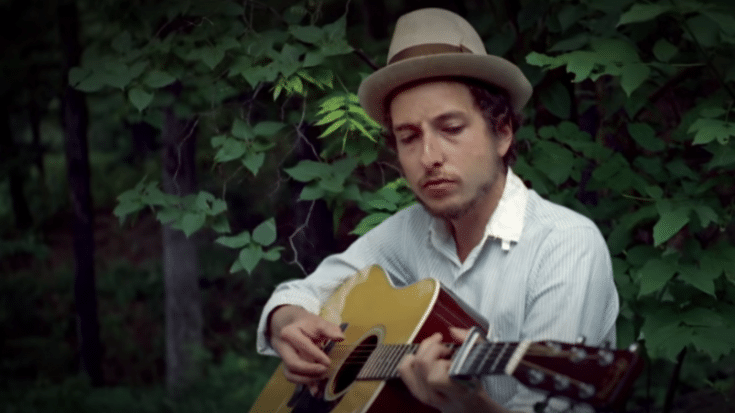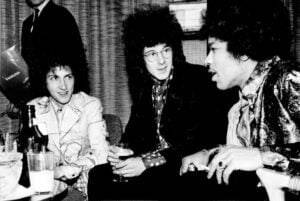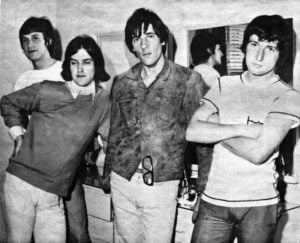3 Lost Songs from the ’60s That Deserve an Official Release Now

via Bob Dylan/YouTube
The 1960s were a golden era for music—a time of constant experimentation and sonic innovation. But for every groundbreaking hit that made it onto vinyl, countless tracks were left behind. Some were buried in studio vaults, trapped on scratchy bootlegs, or simply forgotten. These songs continue to haunt die-hard fans who know they exist but have never heard them in full studio glory. Whether lost to time, shelved by record labels, or simply left unfinished, they remain elusive treasures of music history.
Here are three standout songs from the 1960s that, for one reason or another, never received an official release—but truly deserve one.
1. “The Palace of the King of the Birds” – The Beatles
This track is so obscure that even some lifelong Beatles fans may not know it exists. “The Palace of the King of the Birds” is a dreamy, mostly instrumental piece recorded during the Let It Be sessions in early 1969. Unlike the band’s typical fare, it feels more like an ambient jam—part lullaby, part experimental film score.
Only a handful of takes were recorded, and each version differs. One extended take runs nearly 14 minutes and plays more like an improvised soundscape than a structured song. Decades later, a snippet of this ethereal track resurfaced in the end credits of Peter Jackson’s 2021 documentary The Beatles: Get Back, offering a glimpse into what might have been.
Paul McCartney attempted to revive the song in 1978 for his unreleased Rupert the Bear project, but that version also remains officially unreleased. To this day, “The Palace of the King of the Birds” remains a strange, beautiful fragment of Beatles lore—still waiting for the right moment to be heard in full.
2. “She’s Your Lover Now” – Bob Dylan
Bob Dylan’s discography is filled with unfinished gems and legendary outtakes, but “She’s Your Lover Now” stands out as one of the most famously incomplete. Recorded during the 1966 sessions for Blonde on Blonde, it showcases Dylan at his lyrical best—with biting lines, emotional tension, and that unmistakable voice.
Unfortunately, no take of the song was ever completed. The most famous version—Take 15—falls apart near the end, with Dylan and the band visibly giving up mid-performance. That raw version was eventually released on The Bootleg Series Volumes 1–3, but it still feels more like a rough draft than the final product.
Fans have long hoped for a polished version of this heartbreak-laden track, but Dylan’s tendency to keep moving forward rather than revisiting the past makes a completed release unlikely.
3. “Mrs. O’Leary’s Cow” – Brian Wilson & The Beach Boys
No discussion of lost 1960s music is complete without Smile, the most famous unreleased album in rock history. Conceived as The Beach Boys’ ambitious follow-up to Pet Sounds, Smile was Brian Wilson’s psychedelic journey through American myths, elemental themes, and musical surrealism. But due to mounting pressure and Wilson’s deteriorating mental health, the project fell apart.
“Mrs. O’Leary’s Cow”, also known as “Fire” or “The Elements: Part 1,” is one of the most compelling tracks from the aborted album. It’s a fiery, eerie composition filled with strange effects and an unorthodox arrangement. Legend has it that Wilson believed the music somehow sparked actual fires in Los Angeles, prompting him to shelve the song—along with the rest of Smile.
A rough version of the track was finally included in The Smile Sessions box set, and Wilson re-recorded it for Brian Wilson Presents Smile in 2004. Still, fans continue to hope for a definitive studio version by the original Beach Boys lineup. Sadly, with several members now gone, that dream may remain unfulfilled.
The Soundtrack We Never Got
These three songs are just the tip of the iceberg. The 1960s were full of bold experiments and visionary ideas—many of which never made it past the studio floor. For music lovers, it’s both thrilling and bittersweet to imagine what might still be hidden in the vaults—or worse, lost forever.
Bootlegs and reissues can offer a glimpse of what could have been, but nothing compares to hearing a fully produced, official version of a lost classic. These songs deserve more than cult status or whispered mentions among collectors—they deserve to be heard.















